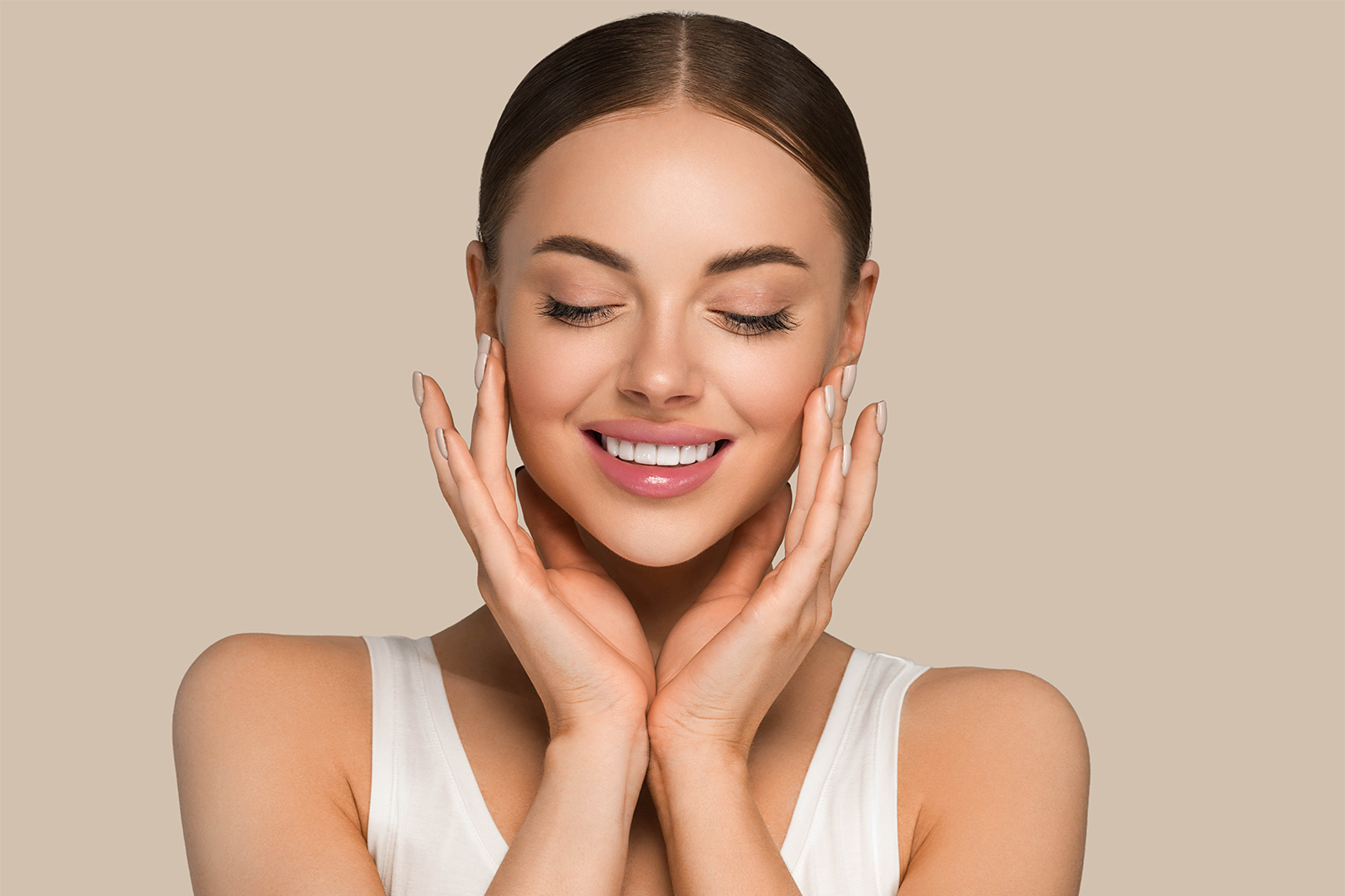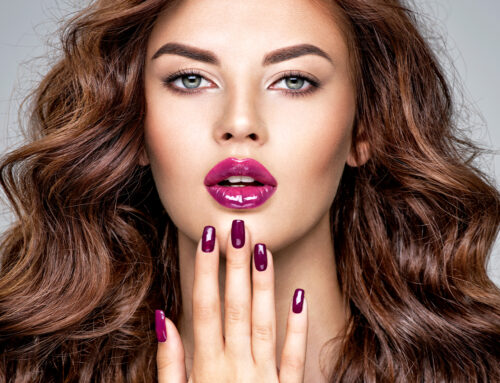So you want to start a proper skincare routine, but you have some questions: How many skincare products do you have to use? Which ones are right for your skin? In what order should you be applying these products? And what do the products even do? We spoke with top dermatologists to help you figure out where to start and what to keep in mind while building the best routine for your skin.
Three Main Skincare Routine Steps
To get the most benefit out of a daily skincare regimen, no matter what your skin type, you should start with three simple steps.
Cleanse
Treat
Moisturize
You probably already know that cleansing means washing your face and moisturizing means hydrating your skin, but what does “treating” involve? In addition to keeping your complexion in tip-top shape, the goal of any good skincare routine is to target problem areas. So, treating means incorporating serums or creams packed full of beneficial skincare ingredients like vitamin C, retinol, alpha hydroxy acids, and others, depending on your skin type and the results you want to see. It can make a massive difference over time and in the health, appearance, and aging of your skin.”
Stick With It
Good things come to those who wait — and that includes skincare routines. Even the best skincare products take time to work, so don’t expect results overnight. If you stick to a consistent, daily routine, you can likely expect to see some benefits within six to 12 weeks — and it can often take at least three to four months to know if your new routine is really working.
1. Makeup Remover/Cleansing Oil
Do this step: At night only.
Unless you went to bed with makeup on (please don’t), there’s no reason to do this step in the morning. But at night it makes your cleanser’s job a lot easier.
“Removing all makeup from your skin should always be your first step at the end of the day. Look for formulas that are effective enough to melt away waterproof mascara, but still gentle on your face—like micellar water. You can also double-cleanse with an emulsifying oil, which gets rid of the need to buy cotton rounds.
2. Cleanser/Soap
Do this step: Morning and night.
Now that your makeup layer is gone, you can proceed with washing your face. “A cleanser/ Soap gets rid of dead skin, pollutants, oils, dirt, and bacteria. We recommend also doing this step when you first wake up in the morning, in order to prep your skin to absorb the active ingredients in your other products.
The best cleanser/Soap for you will depend on your skin type. “It’s important to pay attention to what’s in your cleanser and what’s not in it. We recommends avoiding sulfates, which can have a harsh, stripping effect on your face, and looking for actives that suit your needs. If you’re oily or acne-prone, use a mild exfoliating cleanser with salicylic acid, which dislodges the dead cells that can clog pores.
3. Eye Cream
Do this step: Morning and night.
The first product to go on your face? Eye cream. The reason is simple—because you’ll probably forget to do it otherwise. We recommends patting eye cream on gently with your ring finger (this way you’ll tug less at the delicate skin there) all the way around your eyes, not just underneath them. If you’re worried about eye cream causing your concealer or eye makeup to smear, choose a more lightweight option, like a hydrating gel that sinks in quickly and stays put.
For the best results, look for ingredients like peptides—which help tighten your skin and depuff—as well as antioxidants. We recommends formulas that contain hydrating hyaluronic acid, brightening caffeine, and ceramides (these lock in moisture and help strengthen your skin barrier).
4. Toner/Essence
Do this step: Morning and night.
Both toners and essences are meant to help further prime your skin to absorb active ingredients, but the one you choose will depend on your skin type. Old-school toners were meant to balance skin pH and counteract alkaline soaps, before soap-free cleansers became popular. Now toner usually refers to liquid formulations geared toward oily skin that’s in need of gentle exfoliation and resurfacing.Those with oily or acne-prone skin should look for toners with ingredients like glycolic or salicylic acid.
Essences, on the other hand, tend to be more hydrating. We recommends looking for actives like hyaluronic acid, which will flood your skin with moisture that you can lock in during subsequent steps. To apply, soak a cotton pad in liquid and gently pat it over your face. Alternatively, you can use your hands to do the same thing.
5. Serum
Do this step: Morning and night.
This is the step where you’ll deliver the bulk of active ingredients to your toner/essence-primed face, and it’s important to do it early on in your routine. “Serums are formulated with smaller molecular-weight actives so they penetrate into deeper skin layers. If you apply your serum after a thicker formulation, the active ingredients may not penetrate as well.”
While you should apply serum twice a day, you shouldn’t be using the same formulation. “Serum actives differ for day and night. During the day, she likes to choose serums with antioxidants that protect skin from daytime stressors like free radicals (caused by UV rays), pollutants, and blue light. The most popular ingredient for this is vitamin C, which you will have no problem finding in serum form. (Just make sure to choose one that’s properly stabilized for maximum effect.) At night, opt for a serum with peptides and growth factors to repair skin.
6. Moisturizer
Do this step: Morning and night.
Moisturizers are there to simultaneously hydrate and seal in hydration, which is why these formulas tend to be heavier than the layers that go underneath. “You should use moisturizers with humectants like glycerin and hyaluronic acid, which pull in water. We also recommend looking for ceramides, which seal the outer layers of skin.
Many of her patients prefer to use separate formulas for their morning and nighttime routines. This has more to do with how moisturizers feel than anything else. You can use a lightweight formula in the morning that blends better with your makeup and reserve a heavier cream for evening.
7. Spot Treatment
Do this step: Morning and night.
You need to use spot treatments on active breakouts only, but if you’re experiencing acne, you can apply a leave-on spot treatment both morning and night to speed up its healing cycle. You should spot-treat after you’ve applied your moisturizer, not before. This helps make sure the product stays on top of the pimple, and doesn’t go on the rest of your face. “If you’re using a strong acid and then smear moisturizer all over your face, you run the risk of the product getting on more sensitive areas. You’ll also dilute its effectiveness. Wait for your a.m./p.m. moisturizer to sink in, then carefully pat over the affected areas. The two most common over-the-counter ingredients for spot treatments are benzoyl peroxide and salicylic acid.
8. Face Oil
Do this step: Morning and night.
If there’s one step in your daily skin-care routine that surprisingly divides experts, it’s face oil. The most common recommendation is to apply it last at night and second-to-last before sunscreen in the morning. That’s because oils are occlusive. Meaning, they help trap moisture in your skin. Oils provide a protective barrier to help prevent moisture from evaporating. Anything applied over it may not be offering as much benefit to your skin because it can’t get through.”
However, some derms advise their patients to take this step earlier in their routines (usually before moisturizer), depending on the formulation of the oil they’re using. “Some oils are designed with ingredients that hydrate, others to brighten or even to strengthen your skin. Whichever way you land, the important thing is that you don’t overdo it—with face oils, a little goes a long way. To apply, warm about two to three drops of oil in your palms and pat lightly over your face.
9. Sunscreen
Do this step: In the morning only.
What derms unanimously agree on is that you should wear sunscreen every single day to prevent UV damage—whether or not you go outside. Sunscreen needs to go over face oil in order to be most effective. You do not want anything to stop the sunscreen from working, or making it less effective. Putting an oil on top of your sunscreen can decrease it’s efficacy.
There are two types of sunscreens to choose from for your final step: physical and chemical. Physical blockers contain minerals like titanium dioxide and zinc oxide and work by reflecting light away from your skin. Chemical blockers, on the other hand, work by absorbing light and converting it into heat, preventing it from penetrating into your skin. Mineral formulas are often better for sensitive skin, while chemical formulations tend to be thinner and spread more easily.








Leave A Comment